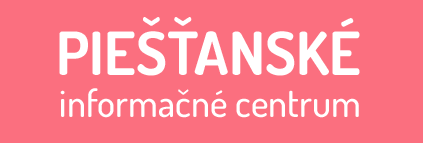The dam on the River Váh - Sĺňava - was built at the end of the 1950s on the southeastern border of Piešťany. It was only created because of utilitarian reasons as a storage dam for the hydroelectric power plant in Madunice. However, it was quickly realised that, thanks to several aspects, the 430 hectare (1062.55 acres) water dam would also be important for birds.
An important bird migration route runs through the Váh valley. It is used by water species and species living near water as a place to rest during the spring and autumn passage. They stop and stay for several days, weeks or months in autumn. Some species even spend the winter in Sĺňava. There are various kinds of ducks, geese, grebes, loons, herons, sandpipers, stints and other water species and species living near water among the migrating birds.
There are various prominent guests of Sĺňava such as: the Purple Heron, Ruddy Shelduck, Black Scoter, Common Eider, Long - Tailed Duck, Arctic Jaeger, Common Loon, Kentish Plover, Bar - tailed Godwit, Gull - billed Tern and White - tailed Eagle. Among the species that have increased the frequency of their occurrence in recent years are the Whooper Swanand Great Cormorant.
Sometimes, even birds from distant continents can be observed in Sĺňava. These are usually individuals which escaped from captivity. The Greater Flamingo, Black Swan, Sacred Ibis, Egyptian Goose and other interesting species have been seen here.
Wintering of birds in the water areas of the environs of Piešťany could form a separate chapter. Special attention ofornithologists has been devoted to this topic and there isplenty of specialised literature about it. Thanks to favourable microclimatic conditions, which are related to thermal springs and the favourable location of Piešťany, the water does not freeze in many places during the most severe winters and it gives birds the opportunity to survive the hardest season of the year. Sĺňava undoubtedly ranks among the most important wintering places of birds in Slovakia. The Snow Bunting, Twite and White - winged Snowfinch are among some of the rare wintering species. The Common Moorhenis a typical hibernator.
After construction of the dam was finished there were no conditions for nesting of birds. The situation started to get better in the 1960s when Viktor Kubán, who devoted his life to the research and protection of birds in Sĺňava, created a green enclave in the area below the right bank of the dam. A real oasis for birds was formed there over the course of time. Warblers, penduline tits, geese, swans and many other species such as the Little Bittern nest in this place. The opportunities for nesting grew even bigger in 1972 when a small island in the middle of the dam was created thanks to the accumulation of extracted gravel. About 7000 pairs of Black - headed Gull nest on less than three hectares (7.41acres) of this island every year. The news that three kinds of gulls (Yellow - legged Gull, Common Gull and Mediterranean Gull), which had not nested in Slovakia before, nested in this place, in a short span of time, drew the attention of specialists. However, the nest colony of the Common Tern, with more than 70 pairs, is the greatest scarcity of Bird Island. This species is among the threatened birds of the EU. We have also recently observed the nesting of some rarer ducks such as the Red - crested Pochard.
The confirmation of extraordinary values of this locality from the point of the occurrence of rare bird species became an impulse to rank Sĺňava among the group of protected areas of Slovakia in 1980. The protected area involves 691 hectares (1707.50 acres), the dam itself is 430 hectares (1062.55 acres). Nowadays, it is also the highest concentration of gull - like birds in Slovakia. That is why this locality rightfully became one of the most important bird areas from the point of the European Union. Besides thermal springs, it is another incalculable value given to Piešťany by nature.
The protected area of Sĺňava not only deserves our attention and respect but also help, care and consideration.
Text: Kornel Duffek
Photo: MUDr. Pavel Kaňuščák, Tomáš Hudcovič

















